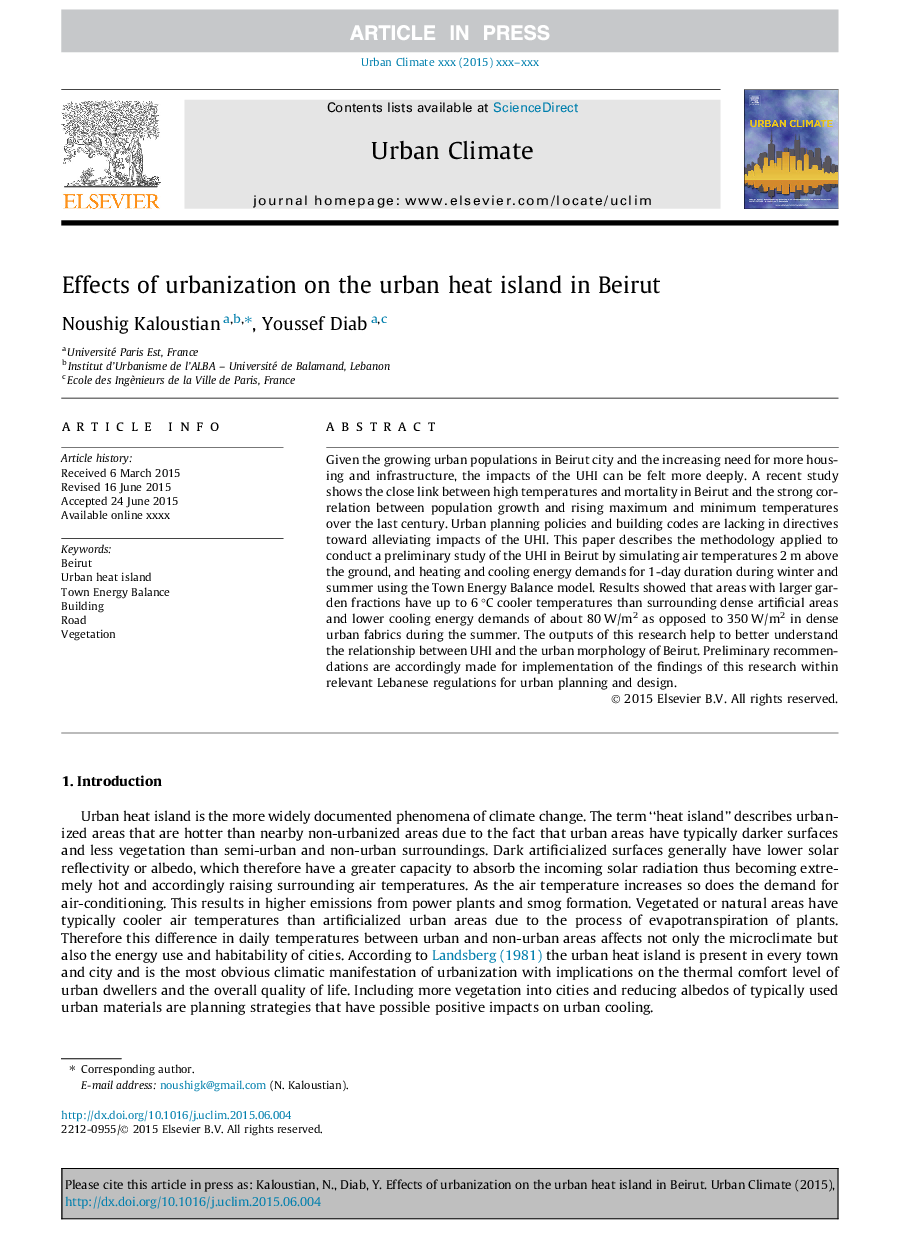| Article ID | Journal | Published Year | Pages | File Type |
|---|---|---|---|---|
| 10260243 | Urban Climate | 2015 | 12 Pages |
Abstract
Given the growing urban populations in Beirut city and the increasing need for more housing and infrastructure, the impacts of the UHI can be felt more deeply. A recent study shows the close link between high temperatures and mortality in Beirut and the strong correlation between population growth and rising maximum and minimum temperatures over the last century. Urban planning policies and building codes are lacking in directives toward alleviating impacts of the UHI. This paper describes the methodology applied to conduct a preliminary study of the UHI in Beirut by simulating air temperatures 2 m above the ground, and heating and cooling energy demands for 1-day duration during winter and summer using the Town Energy Balance model. Results showed that areas with larger garden fractions have up to 6 °C cooler temperatures than surrounding dense artificial areas and lower cooling energy demands of about 80 W/m2 as opposed to 350 W/m2 in dense urban fabrics during the summer. The outputs of this research help to better understand the relationship between UHI and the urban morphology of Beirut. Preliminary recommendations are accordingly made for implementation of the findings of this research within relevant Lebanese regulations for urban planning and design.
Related Topics
Physical Sciences and Engineering
Earth and Planetary Sciences
Earth and Planetary Sciences (General)
Authors
Noushig Kaloustian, Youssef Diab,
